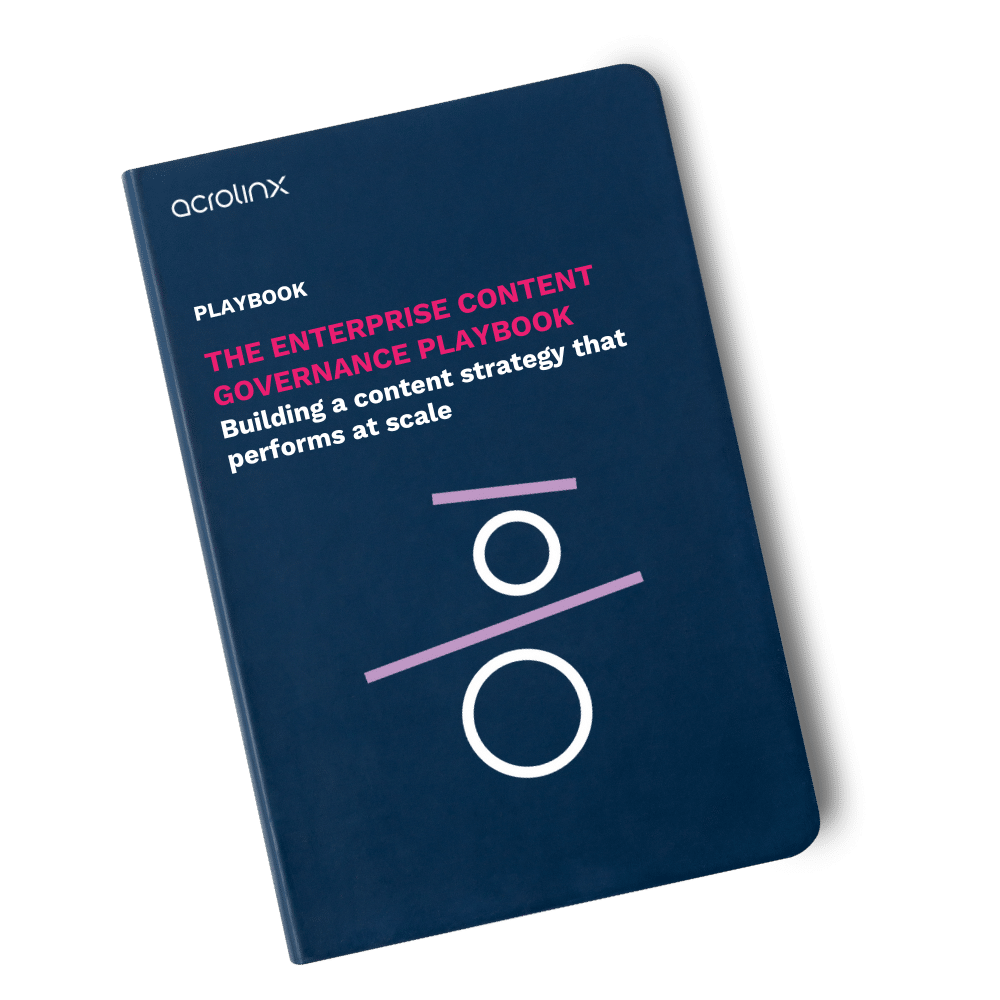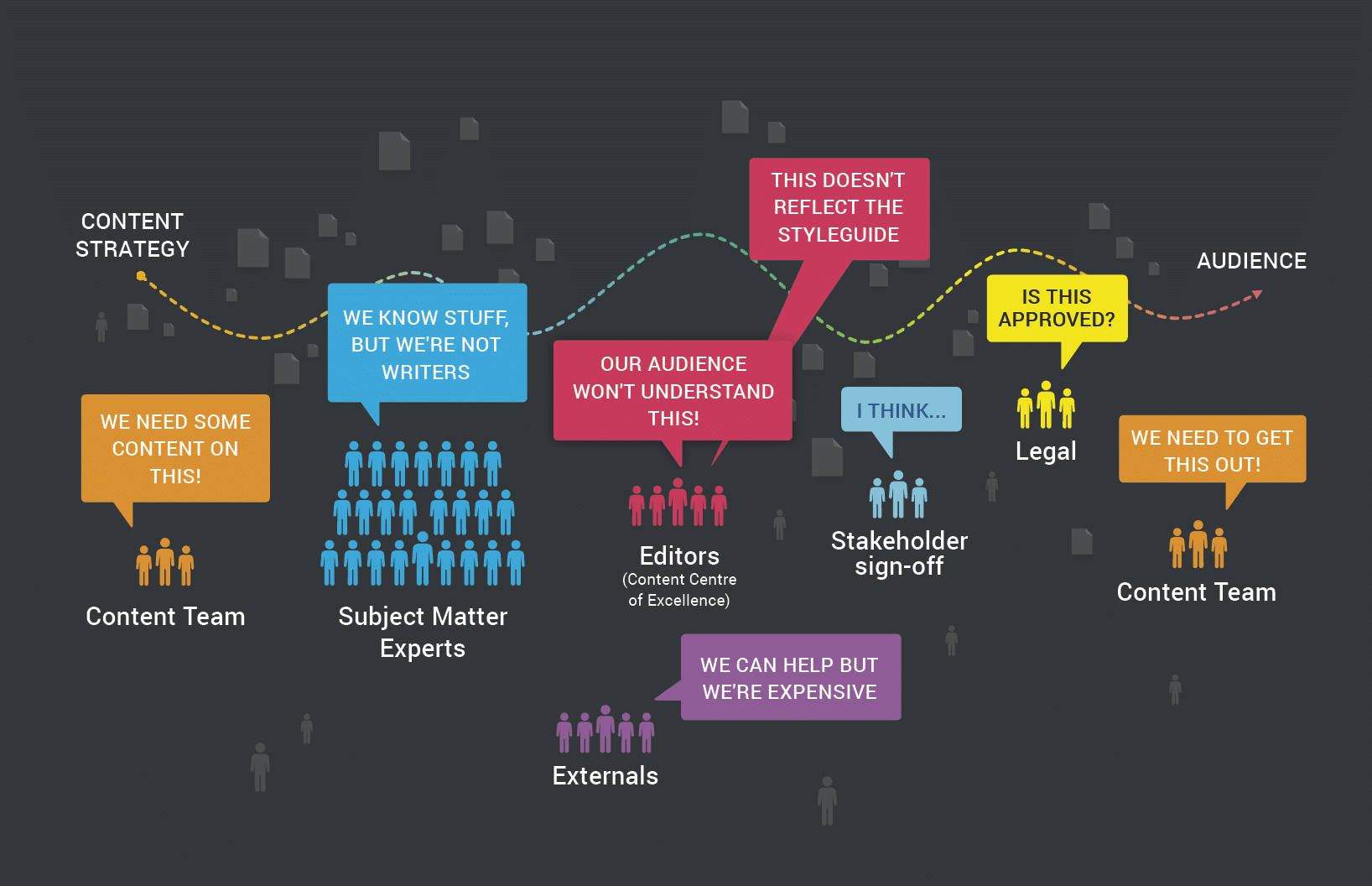How Content Organization Can Strengthen The Customer Experience

Not that long ago, businesses that produced content as part of their communication strategy had a relatively straightforward job. They might have a writer or two, an editor, and a limited selection of channels where they published their content. Today, by contrast, in a world that’s becoming increasingly digital, brands are finding it a lot easier to produce, publish, and promote tons of content. Not only that, they’re pushing all that content out through an ever-expanding array of distribution channels.
It’s this humongous task that often leads to challenges. In fact, what it often results in is content chaos. That chaos can easily undermine all the effort your organization has put into reaping the benefits of content. How? By leading to inefficiencies and inaccuracies.
A muddy content strategy leads to chaos
More people are creating, editing, and publishing than ever before. A global brand might have hundreds or thousands of authors creating content, most of whom probably aren’t professional writers.
Unfortunately, as the number of content creators in your organization multiplies, the consistency and quality of your company’s content usually suffers. It becomes much harder to ensure accurate spelling and grammar, the correct use of terminology, and the right tone of voice for your brand. All the more so if you’re translating your content for global audiences.
And guess what. Problems like these just can’t be solved by hiring more editors.
To manage the huge variety of content formats and distribution channels your enterprise targets, you need a well-documented content strategy. Why? Well, just imagine that you’re producing blogs, white papers, tweets, podcasts, webinars, product guides, and advertising materials, among other content. Not only that, you’re housing it in knowledge bases, customer service databases, self-service support sites, tech documentation centers, and marketing hubs. Plus, you’re publishing it on websites, social media platforms, GitHub repositories, and more.
If you’re not keeping track of what needs to be published where and when, and don’t have a calendar for future publications, your content is at risk. Chaos will inevitably sneak in, creating fragmentation, duplication, quality and consistency issues, and buyer confusion. And that can cost your business a fortune.
The impacts of unorganized content
Content chaos is expensive. Inefficient content creation processes put pressure on valuable resources. If your editing, review, and approval processes are burdensome and long, then delays in getting the content to market will erode its value.
Not only that, if content gets passed among too many people, it can get lost, stuck in silos, or end up being duplicated, which wastes time and effort. Without robust strategies for translating content accurately and on-brand, those costs will skyrocket too.
While these things all add up, the biggest cost is how it affects your customers. Today’s consumers expect high-quality, valuable, interesting content, delivered to them when and where they need it. Content is an essential part of the customer journey. It’s critical for building trust and brand recognition, and establishing loyalty. If you’re not delivering great content, your customers might go elsewhere.
Content chaos creates confusing, fragmented, and inconsistent customer experiences. Content that’s off-strategy, off-brand, undiscoverable, or irrelevant will damage your business and hand your competitors an easy advantage. That’s a cost your organization can’t afford to bear.
Optimize your content organization and strategy
To effectively tackle content chaos, start by establishing a comprehensive content strategy that aligns with your business goals and audience needs.
Begin with a detailed content audit to identify gaps, redundancies, and opportunities for improvement. Develop a centralized content repository to store, manage, and track all your assets, ensuring easy access for contributors and maintaining version control. Additionally, implement a robust style guide that outlines brand tone, terminology, and formatting standards to ensure consistency across all channels.
Content governance is equally critical to maintaining organization and quality. Assign clear roles and responsibilities for content creation, editing, approval, and publishing. Use tools like content calendars to plan and schedule publications, ensuring timely delivery. Regularly monitor content performance through analytics to measure its effectiveness and refine your strategy. Incorporating these practices can increase your organization’s efficiency and deliver a cohesive and high-quality content experience.
Maintaining content organization with governance
Successfully creating, publishing, and managing great content is a boon for any business. But content chaos can undermine that, so you need to tackle it head on. Consider changing how you think about content governance. Content governance is a systematic approach to managing your content strategy — has emerged as a discipline in response to the chaos created by huge demand and increasing digitization. It may be the solution your business needs.
To learn more about eliminating chaotic content and implementing content governance download the Enterprise Content Governance Playbook here.
Are you ready to create more content faster?
Schedule a demo to see how content governance and AI guardrails will drastically improve content quality, compliance, and efficiency.
The Acrolinx Team






